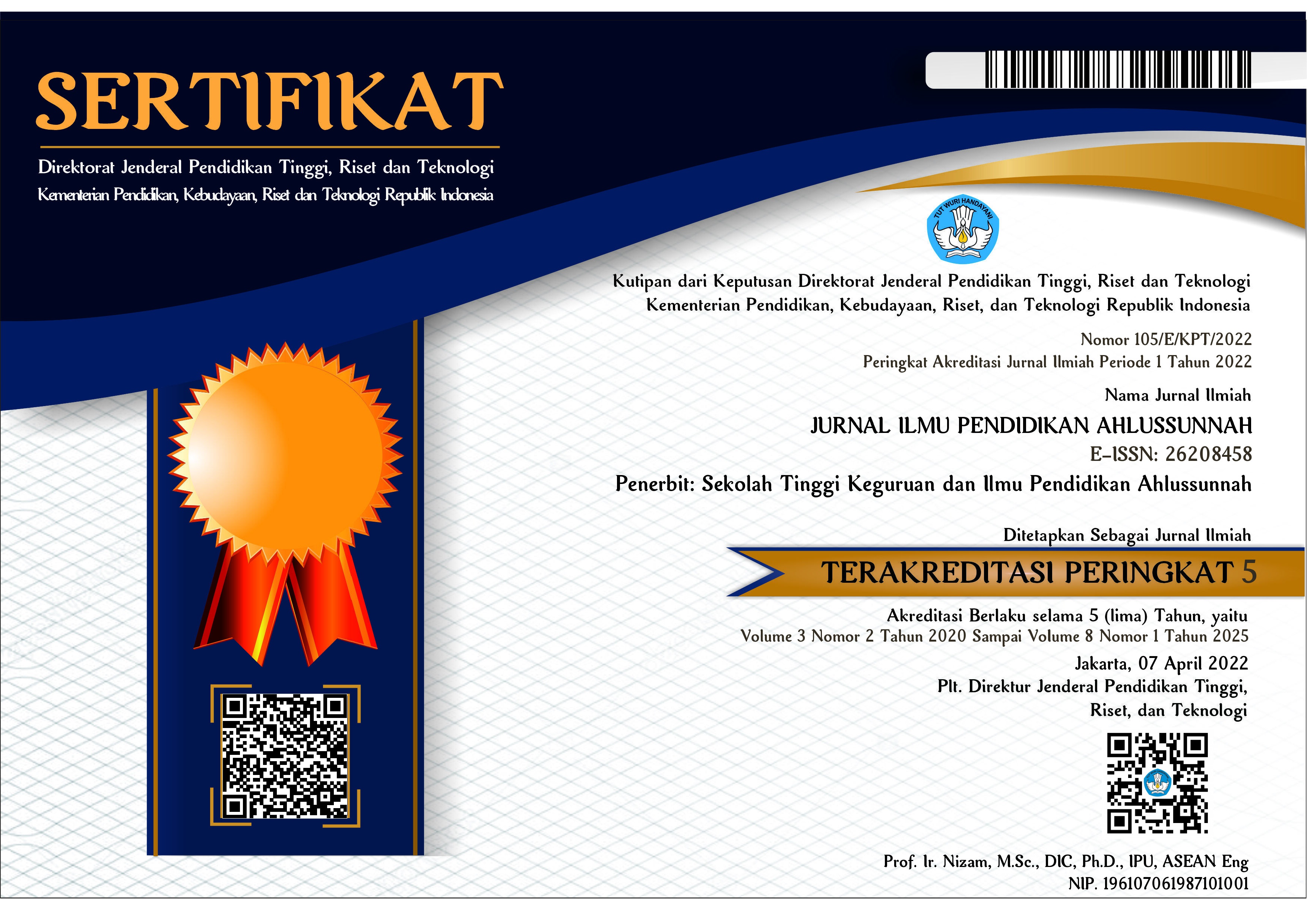APPLICATION OF THE INDEX CARD MATCH TYPE COOPERATIVE MODEL IN SOCIAL SCIENCE LEARNING IN PRIMARY SCHOOLS
PENERAPAN MODEL KOOPERATIF TIPE INDEX CARD MATCH PADA PEMBELAJARAN IPS DI SEKOLAH DASAR
Abstract
Social studies subjects are integrated learning from history, geography and economics subjects as well as other science subjects so that the content is very large and the subject matter is very large and quite heavy. Thus, a learning model is needed that can motivate students in learning, especially social studies learning. This research aims to see the results of implementing the index card match type cooperative model in social studies learning in elementary schools. This research uses a qualitative approach and the type of research is classroom action research. The subjects of this research were teachers and students of class 5 at SDN 2 Bahonsuai, consisting of 22 students. This research was carried out in 2 cycles. Each cycle includes planning, implementation, observation and reflection stages. Data collection was carried out using observation, test and documentation techniques. Data were analyzed using qualitative data analysis techniques. The results of the first cycle of learning show that teacher activities are in the good category (B), student activities and learning outcomes are in the sufficient category (C). The learning results of cycle II show that teacher activities, student activities and learning outcomes are in the good category (B) so it can be concluded that the application of the index card match type cooperative learning model can improve the process and student learning outcomes in social studies content in class 5 of SDN 2 Bahonsuai.
References
Aqib, Z., & C. (2018). Teori dan Aplikasi Penelitian Tindakan Kelas untuk Guru/Kepala dan Pengawas Sekolah/Dosen dan Mahasiswa/Peneliti. CV Budi Utama.
Arikunto, S., Suhardjono, & Supardi. (2015). Penelitian Tindakan Kelas. Bumi Aksara.
Endayani, H. (2018). IPS, SEJARAH DAN KONSEP PENDIDIKAN. Ittihad-Jurnal Pendidikan, 2(2), 1–22.
Huda, M. (2014). . Model-model Pengajaran dan Pembelajaran. Pustaka Pelajar.
Istarani. (2012). 58 Model Pembelajaran Inovatif. Media Persada.
Kusuma, S. T. (2021). Peningkatan Hasil Belajar Matematika Melalui Pembelajaran Penemuan. Alim | Journal of Islamic Education, 3(2), 157–168. https://doi.org/10.51275/alim.v3i2.215
Lubis, maulana arafat, & Azizan, N. (2018). Penerapan strategi index card match dalam meningkatkan hasl belajar siswa pada mata pelajaran IPS di kelas V MIN 3 Tapanuli Selatan. Jurnal Ilmiah Al-Hadi, IV(1), 844–851.
Melvin L Silberman. (2009). Active Learning Strategi Pembelajaran Aktif. Pustaka Insan Madani.
Nurlatifah, M. (2017). Penggunaan Model Examples NonExamples Untuk Meningkatkan Keaktifan Belajar Dan Hasil Belajar Siswa Kelas IV Pada Subtema Kebersamaan Dalam Keberagaman. Universitas Pasunda.
Pratiwi, I. T. M., & Meilani, R. I. (2018). Peran Media Pembelajaran Dalam Meningkatkan Prestasi Belajar Siswa. Jurnal Pendidikan Manajemen Perkantoran, 3(2), 33. https://doi.org/10.17509/jpm.v3i2.11762
Rahayu, A., & Pramukantoro, J. A. (2013). Pengaruh model pembelajaran think-pair-share dengan strategi index card match terhadap hasil belajar siswa pada standar kompetensi menerapkan dasar-dasar elektronika di Smk Negeri 1 Madiun. Jurnal Pendidikan Teknik Elektro, 2(3), 991–999.
Rukin. (2021). Metodologi Penelitian Kualitatif Edisi Revisi. : CV. Jakad Media Publishing.
Rusman. (2014). Model-Model Pembelajaran: Mengembangkan Profesionalisme Guru. Rajawali Pers.
Suani, T. (2022). … Pembelajaran IPS Tema 4 Tentang Kegiatan Ekonomi dan Hubungannya dengan Berbagai Bidang Pekerjaan, melalui Strategi Pembelajaran Index Card Match (ICM …. Jurnal Terapan Pendidikan Dasar Dan Menengah, 2, 689–695. http://ojs.unublitar.ac.id/index.php/jtpdm/article/view/673%0Ahttps://ojs.unublitar.ac.id/index.php/jtpdm/article/download/673/562
Trinovia, V., & Mulyanratna, M. (2013). Penerapan strategi index card match (mencari pasangan kartu) dalam model pembelajaran kooperatif tipe stad pada materi alat optik. Jurnal Inovasi Pendidikan Fisika, 2(3), 85–88.















